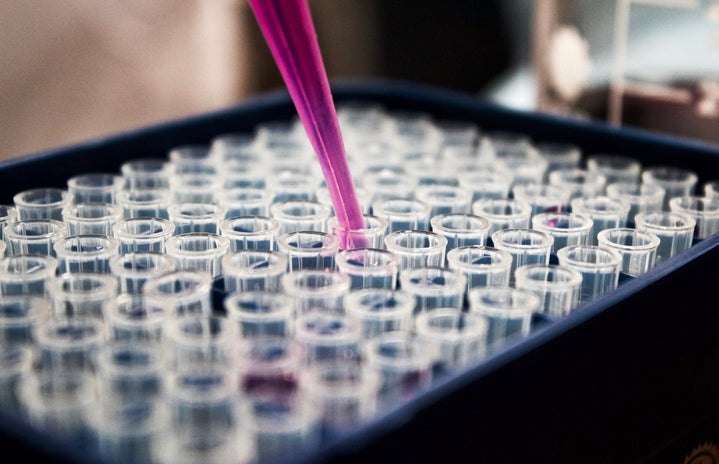As most of you know, the field of science wasn’t always as regulated as it is today. While this created some horror stories (a few of which I’ll talk about in this article), it also led to absolutely wild tales that will leave you wondering what reality even is.
The unfortunate fact of the matter is that most things we know today would not have been discovered without the hazy ethics and mad science of the past. Some of the most important discoveries were made in ways that wouldn’t even be contemplated today. These discoveries are so important that you learn them in every science class. I could probably make a drinking game out of how often these cases get mentioned; so without further ado, I present to you Scientific Case Studies that Every Science Major Knows.
1. Phineas Gage
This list wouldn’t be complete if Phineas Gage didn’t start it. I think I’ve heard this name mentioned in every class where the brain is even mentioned (and I’m a neuroscience major, so that’s a lot of classes). If you don’t know Phineas Gage, he was a lovely young chap who worked in railway construction. On an unfortunate day in 1848, he was going about his business, and a rail spike went through his head! Now that’s what I call getting railed. And you think you’ve had bad days at work. Although he could be considered the first ever metalhead…. (pause for laughter), he was important for another reason. Even though he survived the incident, he was never himself again. Phineas went from laughing and being full of life to being moody, offensive, and dead behind the eyes (think of your typical university student). This is when we discovered there is a link between the front of the brain and personality. It is now widely believed that personality resides in the frontal lobe of the brain, fortunately (for us), the place where the railway rod lodged in Phineas Gage’s brain (if only workers’ comp existed back then). If it wasn’t for poor old Phineas getting railed in the head, we might have been decades off making this important discovery.
2. H.M
Another absolutely wild case study is HM. He was called HM for many years, to give him some privacy, and his name was only revealed once he’d died. HM suffered from seizures which became quite debilitating during his teenage and adult years, and nothing seemed to work. His doctor, one William Beecher Scoville, decided that the only plausible way to cure him would be to remove the part of HM’s brain where the seizures were occurring. Keep in mind that research on the brain was lacking during this time, and many areas of the brain were yet to be discovered. HM decided to go along with the surgery, so Scoville removed the area of the brain where the seizures originated via aspiration (basically, he sucked it out). This area would come to be known as the hippocampus. Now we know that the hippocampus is important in some types of memory, but no one knew that at the time. After the surgery, HM had some retrograde amnesia (he couldn’t remember some events from before the surgery), but he had severe deficits in anterograde amnesia, he couldn’t form any new memories.Through HM, we learned that different types of memory are stored in different areas of the brain. While HM couldn’t form new episodic memories (biographical memories, like what you do in a day or new people you meet), but he could form procedural memories (like riding a bike or getting better at a drawing task). Everything we know about memory stems from HM.
A little sidebar: While we no longer suck out people’s hippocampi, the treatment for severe seizures that don’t get better is something called a corpus callosotomy (or a split-brain procedure), where surgeons cut through the corpus callosum, which holds the two hemispheres together (which is quite wild as well).
3. Barry Marshall
While Barry Marshall’s name is lesser known, he is a true example of mad science. I’m sure you’ve all heard that stress causes stomach ulcers. While this is partially true (due to fun chemical reactions inside your body), the main cause of stomach ulcers is actually a bacteria called H pylori. Marshall first discovered this after conducting a biopsy on a patient and finding this new bacteria in the patient’s stomach lining. After conducting 100 more biopsies on patients with gastritis and various types of stomach ulcers and finding this bacteria in every single one, Marshall concluded that H pylori was the cause of stomach ulcers and gastritis. Here’s where it gets wild. Back in the day, people liked to blame every illness on emotions, and the belief that emotional stress was the main cause of ulcers was something people didn’t want challenged. No one believed Marshall when he said bacteria causes ulcers (give them a break, guys – it was only the 1980s), so he did what any rational person would and drank A FULL CULTURE OF H PYLORI. After contracting many ulcers and acute gastritis, he tested himself for H pylori and – lo and behold – there it was in his stomach lining! After taking some antibiotics, he was back to normal, thereby proving that H pylori causes stomach ulcers . Imagine being so devoted to science that you would willingly give yourself ulcers.Now that’s what I call a true scientist.
https://www.smithsonianmag.com/history/phineas-gage-neurosciences-most-famous-patient-11390067/
https://www.britannica.com/biography/Barry-J-Marshall
https://www.simplypsychology.org/henry-molaison-patient-hm.html


